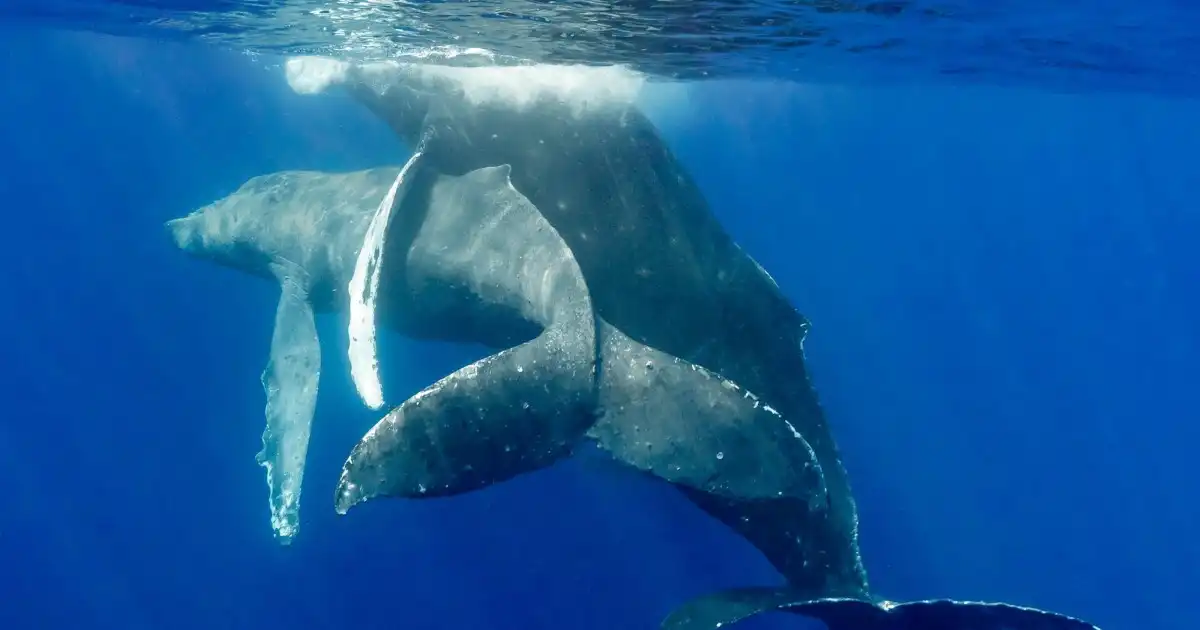Humpback whales engage in same-sex behavior observed for the first time
Humpback whales caught having sex under a boat for the first time, challenging preconceived notions about their behavior.
Humpback whales, known for their majestic size and peaceful nature, surprised researchers with a groundbreaking discovery. For the first time ever, two male humpback whales were caught engaging in sexual activity right under a boat. This unprecedented event shed light on a previously unknown aspect of humpback whale behavior.
The sighting of humpback whale sex is a rare occurrence, with experts spending decades studying the social behavior of these massive creatures. Despite their size, measuring up to 16 meters long and weighing as much as 36 tons, the sexual behavior of humpback whales remained a mystery until now. The photos taken by Lyle Krannichfeld and Brandi Romano captured not only the first documented sexual activity but also the first gay sex ever seen between humpback whales.
The significance of this discovery was not lost on the researchers. Krannichfeld emphasized the importance of this observation to the scientific community and those studying humpback whales. The sighting provided valuable insights into the behavior of these creatures, particularly in terms of mating and birth, which have remained largely unknown.
The 30-minute encounter off the coast of Maui in 2022, as documented in a study published in the Marine Mammal Science journal, revealed a unique and remarkable event. Lead author Stephanie Stack highlighted how this discovery challenges preconceived notions about humpback whale behavior. The copulation of two male whales, with one appearing visibly emaciated, provided new insights into the complex social structures of these incredible creatures.
The study described the encounter in detail, noting the unusual behavior of the whales during the mating process. The weaker whale attempted to swim away from the stronger male but was held in place with its pectoral fins. This interaction, taking place just 15 feet under the surface of the water, showcased a side of humpback whale behavior that had never been witnessed before.
While same-sex activity is common across animal species, this was the first time it had been documented in humpback whales. The purpose of nonreproductive behavior in animals can vary, from practicing reproductive sex to forming social alliances or reducing social tension. Humpback whales, like other cetaceans, may use a genital slit or their anus for gay sex, shedding light on the complexity of their behaviors.
Overall, this groundbreaking discovery provided valuable insights into the behavior of humpback whales and challenged existing perceptions about their social structures. The documentation of this event will undoubtedly contribute to further research and understanding of these magnificent creatures.











Comments on Humpback whales engage in same-sex behavior observed for the first time